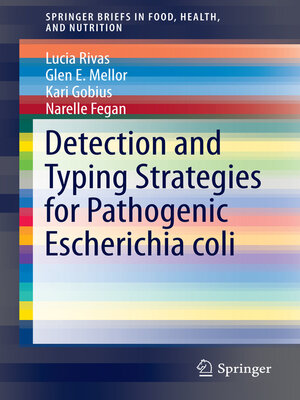Detection and Typing Strategies for Pathogenic Escherichia coli
ebook ∣ SpringerBriefs in Food, Health, and Nutrition
By Lucia Rivas

Sign up to save your library
With an OverDrive account, you can save your favorite libraries for at-a-glance information about availability. Find out more about OverDrive accounts.
Find this title in Libby, the library reading app by OverDrive.



Search for a digital library with this title
Title found at these libraries:
| Loading... |
This Brief will review the methods that are currently available for the detection, isolation, and typing of pathogenic E. coli with a particular focus on foodborne diseases caused by the Shiga toxigenic E. coli group, which have been implicated in a number of significant outbreaks in recent years. Pathogenic forms of E. coli can cause a variety of diarrheal diseases in hosts due to the presence of specific colonization and virulence factors, and pathogenicity-associated genes, which are generally not present in other E. coli. Six pathotypes of pathogenic E. coli are recognized (Shiga toxigenic E. coli, Enteropathogenic E. coli, Enterotoxigenic E. coli, Enteroinvasive E. coli, Enteroaggregative E. coli and Diffusely Adherent E. coli) and certain strains among these groups are major public health concerns due to the severity of disease that they can cause. Methods to detect and isolate these pathogens from a variety of sources are constantly evolving. In addition, the accumulation of knowledge on these pathogens allows for improved intervention strategies.






